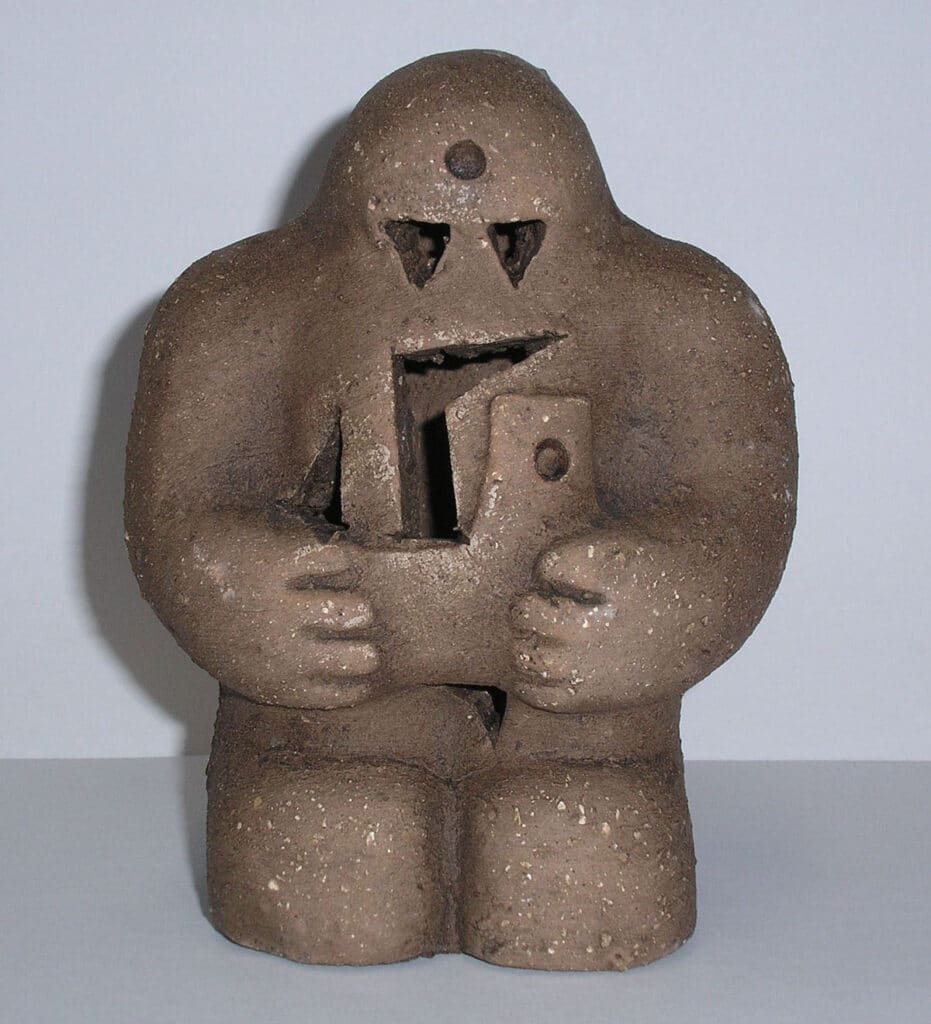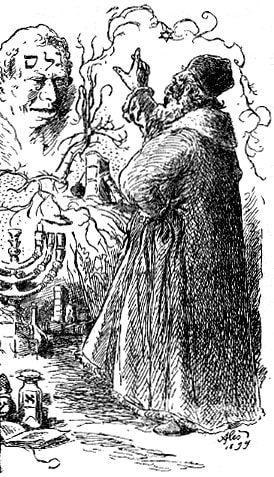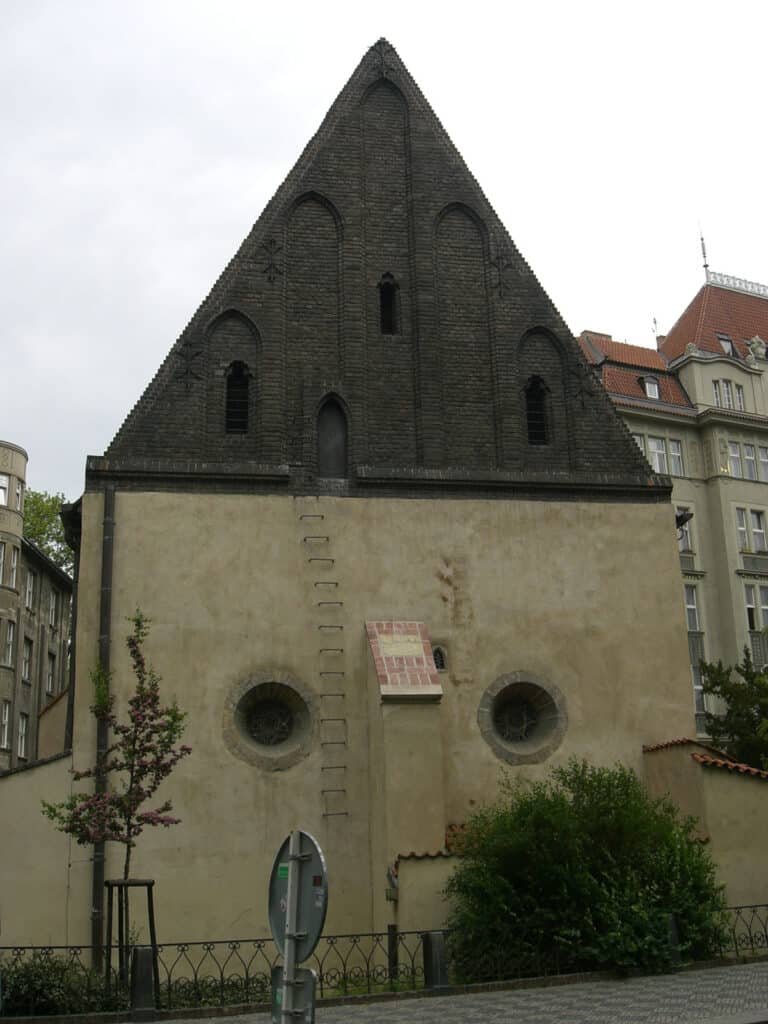Before Superman or Batman, before Magneto or Kitty Pryde, there was the Golem. Half superhero, half monster, the Golem is a creature from Jewish legend — unformed and soulless, existing only to obey. A hulking strongman who caters to his creator’s every whim, from running errands to destroying enemies.

Legends exist for a reason, and fanciful as it sounds, the Golem has a lot to teach us about Jewish history, Jewish anxieties, and Jewish fantasies.
So let’s unpack this mythical monster. What exactly is the Golem, and why does his legend exist?
Jewish history is littered with golems, starting with the first man: Adam. The book of Genesis even outlines the recipe: mix one part earth with one part breath-of-life, and God made the first human.
That breath of life, that animating spark, is what makes Adam human. Without it, he’s just a humanoid figure made out of soil. Or, as the Talmud puts it, a golem — Hebrew for something shapeless and unformed. It’s only when God breathes life into Adam that he becomes a man. So a golem, by definition, doesn’t have a soul.
This might explain why some rabbis felt no compunction about creating golems for their personal use. The Talmudic sage Rava made one to carry messages to a fellow rabbi — convenient, but kind of a fail, because his golem didn’t speak.
Rabbi Hanina and Rabbi Oshaya went a step further, creating a cow-shaped golem-like creature for every Shabbat dinner. (To be clear: they ate it. Apparently, it was delicious.)
The medieval poet Solomon ibn Gabirol is said to have created a golem to take care of his household chores, which, honestly, is a great way to outsource cleaning your house.
One 16th-century Jewish text even recounts the story of a female golem created solely to serve as a concubine. The early 19th-century rabbi David Jaffe supposedly created a golem to act as a Shabbos goy, stoking the town’s communal ovens on Shabbat, when Jews are forbidden from cooking or creating fire.
By far, the most famous golem is the Golem of Prague. Until the 20th century, life was pretty difficult for the average person, who had no cell phones to convey messages instantly, no grocery delivery, no robot vacuums.

The Golem was a sort of wish-fulfillment, a fantasy of an easier life — Instacart, TaskRabbit, and gmail all wrapped up in one hulking package.
The Golem of Prague was no different. But the wish he fulfilled was a lot more urgent. Because unlike the other golems, the Golem of Prague was created to protect.
Prague in the 16th century was not a fun place to be a Jew. Christians of Prague believed that their Jewish neighbors were kidnapping Christian children, draining their blood, and using it for ritualistic purposes. That lie is called a blood libel, and it’s among the most dangerous antisemitic tropes in history.
Angry mobs frequently overran the ghetto, burning and looting everything in their path. The Jewish community was desperate for relief. It was up to their leader, Rabbi Judah Loew ben Bezalel, also known as the Maharal, to come up with a plan.
The Maharal was a wise and holy man whose scholarship profoundly shaped Jewish thought. However, his most famous work isn’t a book of philosophy or commentary. It’s a hulking, earthen, soulless mass, gathered from the banks of the Vltava River. A humanoid lunk, brought to life by a single Hebrew word scrawled on its forehead: Emet, truth.
Rub out the first letter, and Emet becomes Met, death. This was the Golem’s off-switch. The Maharal could activate or deactivate him at will. When he was “on,” the Golem served one purpose: Protecting the Jewish community. And when he was “off”? His eyes closed and his body stilled as though he were dead.
According to one version of the legend, the Maharal called him Yossele, an affectionate nickname for Joseph. The rabbi made sure to turn Yossele off every Shabbat to rest. For a decade, he protected the Jewish community. And for a decade, the Jewish community thrived.

It’s probably pretty obvious why the legend of the Golem has such staying power. The Jewish people have not, historically, had an easy time of it. For 2,000 years, we had no country, army, or institutional power. Instead, our power lay in our education, traditions, and continued existence.
So, the Golem is part wish-fulfillment, part revenge fantasy, representing the raw power that we lacked. This Golem did more than just run errands — he protected us and made us feel powerful and strong.
The tragic coda to Yossele’s story is this: One Friday evening, the Maharal forgot to lay his golem to rest. Deprived of his weekly 25-hour nap, Yossele turned violent. He cut a path of destruction throughout Prague. Some say his violence stemmed from a passionate, unrequited love. Others are less fanciful, detailing only the ways in which he desecrated Shabbat. Whatever the reason, Yossele was no longer the faithful protector of the Jewish ghetto. He was a menace.
The Maharal knew what he had to do.
Somehow, he managed to reach Yossele, rubbing out the first letter on his forehead. Instantly, the Golem dropped — just a lump of clay once more.
The Maharal wrapped him in a tallit, a Jewish prayer shawl, and stored his body in the attic of the synagogue. No one was to visit, he warned. This was the end result of unchecked power. This was what happened when humans played God.

The lesson tracks. Because Jews have an uneasy relationship to power, by the time the Golem showed up, power was an unfamiliar rush — one to be treated with caution.
Spider-Man’s uncle may have coined the phrase, “With great power comes great responsibility.” But the idea isn’t new. And it’s reflected in the tragic story of Yossele.
So the Maharal stowed his creation away in the attic with a strict warning. No one was to wake the Golem unless he was desperately needed. But when the time came, there was no golem to wake — because the Golem had never actually existed.
There was no Yossele to stand between Prague’s Jewish community and the boxcars that hauled them to Theresienstadt and later to Auschwitz. In 1939, 56,000 Jews lived in Prague. By mid-1945, fewer than 10,000 remained.
In Jewish legend, the Golem is a symbol of our painful relationship to power, a cautionary tale about what happens when humans play God.
Just like the best fairy tales, he continues to evolve. He’s the Bear Jew in “Inglourious Basterds,” meting out his vicious justice with the business end of a baseball bat.
He’s a creepy little boy in the 2018 horror film “The Golem.” He’s the basis for novels and comics and episodes of The Simpsons and The X-Files and Supernatural. Each take reflects a new facet of the Golem myth.
